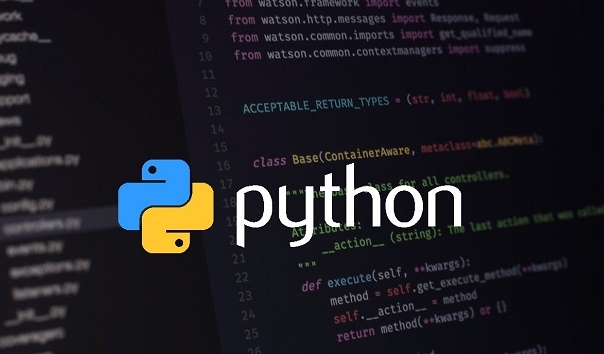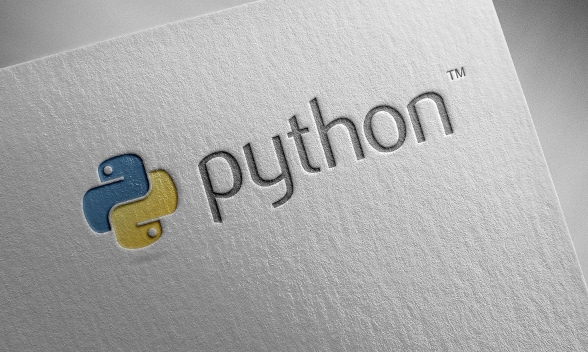利用Python的' Functools”模塊用於高階功能
Python的functools模塊提供三個關鍵工具:1.partial用於固定函數參數,簡化調用;2.wraps用於保留裝飾器元數據,便於調試;3.reduce用於累積操作,如求積。 partial通過凍結部分參數生成新函數,適用於回調和減少冗餘;wraps確保裝飾後函數保留原始名稱和文檔,避免混淆;reduce對序列進行累積計算,適合求和、拼接等操作,但需注意可讀性。這些工具提升代碼簡潔性和可維護性。

When you're working with functions as first-class citizens in Python, the functools module becomes a powerful ally. It offers tools for working with higher-order functions—those that take other functions as arguments or return them as results. If you're looking to write cleaner, more efficient functional-style code, understanding a few key parts of functools can make a big difference.

Understanding functools.partial : Fixing Arguments Made Easy
One of the most useful tools in functools is partial . It lets you "freeze" some portion of a function's arguments and/or keywords, creating a new function with fewer parameters.

For example, suppose you have a function like this:
def power(base, exponent):
return base ** exponent If you find yourself calling power(2, exponent) often, you can create a specialized version:

from functools import partial square = partial(power, exponent=2) print(square(5)) # Output: 25
This is handy when passing functions into APIs that expect a certain number of arguments. You can also use it to simplify repeated keyword arguments in long function calls.
Some common use cases:
- Creating simpler versions of functions with default behavior.
- Pre-filling arguments for callbacks or event handlers.
- Reducing boilerplate in logging, configuration, or data transformation functions.
Using functools.wraps to Preserve Metadata in Decorators
When writing decorators, one subtle but important detail is preserving the metadata (like name, docstring) of the original function. That's where wraps comes in.
Without using wraps , decorated functions lose their identity, which can cause confusion during debugging or introspection.
Here's how you'd typically use it:
from functools import wraps
def my_decorator(func):
@wraps(func)
def wrapper(*args, **kwargs):
print("Something before")
result = func(*args, **kwargs)
print("Something after")
return result
return wrapper
@my_decorator
def say_hello():
"""Prints a friendly greeting."""
print("Hello")
print(say_hello.__name__) # Outputs 'say_hello', not 'wrapper'
print(say_hello.__doc__) # Outputs 'Prints a friendly greeting.' If you forget to use wraps , the resulting function will appear to be the wrapper, not the original function. This can trip up tools like help() or documentation generators. So, whenever you write a decorator meant for production code or reuse, always wrap the inner function with @wraps(func) .
Leveraging functools.reduce for Cumulative Operations
The reduce function applies a binary function (a function that takes two arguments) cumulatively to the items of an iterable, from left to right, effectively reducing the iterable to a single value.
It's especially useful for operations like summing values, concatenating strings, or computing factorials.
Here's a simple example:
from functools import reduce numbers = [1, 2, 3, 4] product = reduce(lambda x, y: x * y, numbers) print(product) # Output: 24
While list comprehensions are great for transformations, reduce shines when each step depends on the result of the previous one. Just keep in mind that readability matters—don't use reduce if a simple loop makes the logic clearer.
A few tips:
- Use
reducewhen you need to accumulate state across a sequence. - Provide a third argument as the initial value to handle empty iterables gracefully.
- Avoid deeply nested lambdas; define a named function if the logic gets complex.
These three tools— partial , wraps , and reduce —are just a slice of what functools has to offer, but they cover many real-world scenarios. They help you write more expressive and maintainable code without reinventing the wheel.
以上是利用Python的' Functools”模塊用於高階功能的詳細內容。更多資訊請關注PHP中文網其他相關文章!

熱AI工具

Undress AI Tool
免費脫衣圖片

Undresser.AI Undress
人工智慧驅動的應用程序,用於創建逼真的裸體照片

AI Clothes Remover
用於從照片中去除衣服的線上人工智慧工具。

Clothoff.io
AI脫衣器

Video Face Swap
使用我們完全免費的人工智慧換臉工具,輕鬆在任何影片中換臉!

熱門文章

熱工具

記事本++7.3.1
好用且免費的程式碼編輯器

SublimeText3漢化版
中文版,非常好用

禪工作室 13.0.1
強大的PHP整合開發環境

Dreamweaver CS6
視覺化網頁開發工具

SublimeText3 Mac版
神級程式碼編輯軟體(SublimeText3)
 Python類中的多態性
Jul 05, 2025 am 02:58 AM
Python類中的多態性
Jul 05, 2025 am 02:58 AM
多態是Python面向對象編程中的核心概念,指“一種接口,多種實現”,允許統一處理不同類型的對象。 1.多態通過方法重寫實現,子類可重新定義父類方法,如Animal類的speak()方法在Dog和Cat子類中有不同實現。 2.多態的實際用途包括簡化代碼結構、增強可擴展性,例如圖形繪製程序中統一調用draw()方法,或遊戲開發中處理不同角色的共同行為。 3.Python實現多態需滿足:父類定義方法,子類重寫該方法,但不要求繼承同一父類,只要對象實現相同方法即可,這稱為“鴨子類型”。 4.注意事項包括保持方
 我如何寫一個簡單的'你好,世界!” Python的程序?
Jun 24, 2025 am 12:45 AM
我如何寫一個簡單的'你好,世界!” Python的程序?
Jun 24, 2025 am 12:45 AM
"Hello,World!"程序是用Python編寫的最基礎示例,用於展示基本語法並驗證開發環境是否正確配置。 1.它通過一行代碼print("Hello,World!")實現,運行後會在控制台輸出指定文本;2.運行步驟包括安裝Python、使用文本編輯器編寫代碼、保存為.py文件、在終端執行該文件;3.常見錯誤有遺漏括號或引號、誤用大寫Print、未保存為.py格式以及運行環境錯誤;4.可選工具包括本地文本編輯器 終端、在線編輯器(如replit.com)
 如何在Python中產生隨機字符串?
Jun 21, 2025 am 01:02 AM
如何在Python中產生隨機字符串?
Jun 21, 2025 am 01:02 AM
要生成隨機字符串,可以使用Python的random和string模塊組合。具體步驟為:1.導入random和string模塊;2.定義字符池如string.ascii_letters和string.digits;3.設定所需長度;4.調用random.choices()生成字符串。例如代碼包括importrandom與importstring、設置length=10、characters=string.ascii_letters string.digits並執行''.join(random.c
 Python中的算法是什麼?為什麼它們很重要?
Jun 24, 2025 am 12:43 AM
Python中的算法是什麼?為什麼它們很重要?
Jun 24, 2025 am 12:43 AM
AlgorithmsinPythonareessentialforefficientproblem-solvinginprogramming.Theyarestep-by-stepproceduresusedtosolvetaskslikesorting,searching,anddatamanipulation.Commontypesincludesortingalgorithmslikequicksort,searchingalgorithmslikebinarysearch,andgrap
 python`@classmethod'裝飾師解釋了
Jul 04, 2025 am 03:26 AM
python`@classmethod'裝飾師解釋了
Jul 04, 2025 am 03:26 AM
類方法是Python中通過@classmethod裝飾器定義的方法,其第一個參數為類本身(cls),用於訪問或修改類狀態。它可通過類或實例調用,影響的是整個類而非特定實例;例如在Person類中,show_count()方法統計創建的對像數量;定義類方法時需使用@classmethod裝飾器並將首參命名為cls,如change_var(new_value)方法可修改類變量;類方法與實例方法(self參數)、靜態方法(無自動參數)不同,適用於工廠方法、替代構造函數及管理類變量等場景;常見用途包括從
 什麼是python的列表切片?
Jun 29, 2025 am 02:15 AM
什麼是python的列表切片?
Jun 29, 2025 am 02:15 AM
ListslicinginPythonextractsaportionofalistusingindices.1.Itusesthesyntaxlist[start:end:step],wherestartisinclusive,endisexclusive,andstepdefinestheinterval.2.Ifstartorendareomitted,Pythondefaultstothebeginningorendofthelist.3.Commonusesincludegetting
 如何使用CSV模塊在Python中使用CSV文件?
Jun 25, 2025 am 01:03 AM
如何使用CSV模塊在Python中使用CSV文件?
Jun 25, 2025 am 01:03 AM
Python的csv模塊提供了讀寫CSV文件的簡單方法。 1.讀取CSV文件時,可使用csv.reader()逐行讀取,並將每行數據作為字符串列表返回;若需通過列名訪問數據,則可用csv.DictReader(),它將每行映射為字典。 2.寫入CSV文件時,使用csv.writer()並調用writerow()或writerows()方法寫入單行或多行數據;若要寫入字典數據,則使用csv.DictWriter(),需先定義列名並通過writeheader()寫入表頭。 3.處理邊緣情況時,模塊自動處理
 Python函數參數和參數
Jul 04, 2025 am 03:26 AM
Python函數參數和參數
Jul 04, 2025 am 03:26 AM
參數(parameters)是定義函數時的佔位符,而傳參(arguments)是調用時傳入的具體值。 1.位置參數需按順序傳遞,順序錯誤會導致結果錯誤;2.關鍵字參數通過參數名指定,可改變順序且提高可讀性;3.默認參數值在定義時賦值,避免重複代碼,但應避免使用可變對像作為默認值;4.args和*kwargs可處理不定數量的參數,適用於通用接口或裝飾器,但應謹慎使用以保持可讀性。







